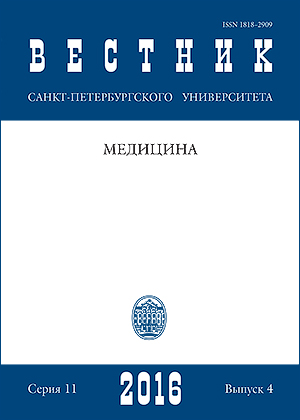EPONYMOUS AND NO LONGER ANONYMOUS: HARD LIFE AND LONG FAME OF RUSSIAN PHYSICIANS. PROCEEDING III. WHO WAS DR. ABRAMOV?
DOI:
https://doi.org/10.21638/11701/spbu11.2016.411Abstract
The article is devoted to biographies of three Russian physicians of the Silver Age (a period in the History of Russian culture between 1890 and 1917). They made early, signifi cant and internationally recognized contributions to medical science and became eponymous, although the twentieth century’s social disasters were to deeply impact their subsequent lives and careers, obscuring their contributions to the global medical community. The biography and academic achievements of S. S. Abramov (1875–1951), a Russian pathologist, microbiologist and immunologist of Armenian origin, discoverer of primary idiopathic myocarditis, are reviewed in the third proceeding. The contribution of this scientist to Medicine is analyzed in the context of its historical epoch forming the background of his individual social choices. Besides his eponymous description, other medical contributions of this scholar are listed, such as his possible priority in the description of dilated cardiomyopathy and his authorship of the first textbook of Pathology in the history of Bulgarian science. Factors facilitating rapid development of theoretical and practical Medicine in late 19th and early 20th century imperial Russia are discussed, for example, cultural symbiosis in a multinational country. The conclusion of the author is that in any epoch, even the most cruel and unfavorable one, creative activity is a path to social immortality. Refs 27. Figs 6.
Keywords:
Sergei Semionovich Abramov, Abramov-Fiedler myocarditis, History of Medicine, Mikhail Nikiforovich Nikiforov, Russian medical emigration, Sofi a University, Armenians in Russia
Downloads
References
References
Downloads
Published
How to Cite
Issue
Section
License
Articles of "Vestnik of Saint Petersburg University. Medicine" are open access distributed under the terms of the License Agreement with Saint Petersburg State University, which permits to the authors unrestricted distribution and self-archiving free of charge.




